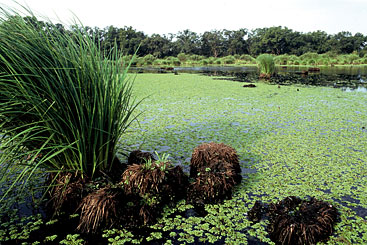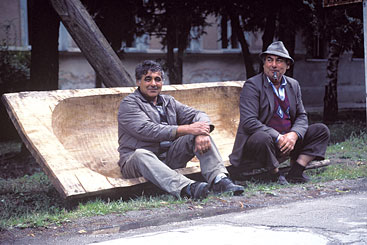Where the European Green Belt meets the Danube
ICPDR Danube Watch

Where the European Green Belt meets the Danube
In an initiative that runs from the Barents to the Black Sea, the European Green Belt is creating an ecological backbone that is a global symbol for transboundary cooperation in nature conservation and sustainable development.

As a transboundary site, Gornje Podunavlje falls under three different legal frameworks and management practices differ across the floodplains.
Few places along the European Green Belt still contain such significant natural and cultural heritage as the transboundary floodplains in the middle course of the Danube. This area spreads over 70,000 hectares in Croatia, Hungary and Serbia, and includes three adjacent protected areas – Danube-Drava National Park in Hungary, Kopački Rit Nature Park in Croatia and Gornje Podunavlje special Nature Reserve in Serbia – as well as neighbouring wetlands and adjacent settlements. The whole area is internationally recognised in accordance with the Ramsar Convention. Most recently, Gornje Podunavlje Special Nature Reserve was proclaimed a Ramsar site in 2007.
As a transboundary site, the area falls under three different legal frameworks and management regimes. As a result, management practices differ across the floodplains. That is not the only problem, however. Intensive resources management threatens this unique ecosystem, along with increased construction on the floodplain boundaries. Shortfalls in proper management planning and broad public participation are often neglected.
Supporting natural and cultural values. A few years ago, however, local communities began to benefit considerably from floodplain values, primarily by developing small-scale tourism facilities and by promoting local traditions and cultural heritage with natural values. This led to increased participation by local communities in the area management. To a great extent, these activities have largely been supported and facilitated by international conservation organizations from the very beginning, especially those occurring in Gornje Podunavlje Special Nature Reserve. “Such activities are essential for initiating the mobility of local communities and to raise interest of local stakeholders to actively take part in activities that support conservation of natural and cultural values,” says Sasa Forgic, Coordinator of the local NGO Centre for Civil Activities.
One of the first projects specifically targeted to mobilise local communities in Gornje Podunavlje Special Nature Reserve, and to improve transboundary co-operation in the middle Danube floodplains, was ‘Integrating local communities and nature conservation in the European Green Belt’. Coordinated by the IUCN Programme Office for South-Eastern Europe in cooperation with partners from both Croatia and Serbia, the project aimed to strengthen capacities of local communities to enable them to participate more actively in the resources planning and management procedures.

Locals in the region, such as these handicraftsmen in Backi Monostor, began promoting local traditions and cultural heritage with natural values.
Linking habitats and communities. One valuable outcome is a Gornje Podunavlje habitat map, following the international EUNIS classification, which will serve as a resource tool for proper management planning. A series of presentations and workshops was held in various communities, and support was provided to local events promoting natural and cultural values. These measures and other activities led to a significant increase of awareness – local communities now consider themselves to be an integral part of the area and its management.
“Activities of international organisations such as IUCN or WWF shed significant light on the role of local communities in sound management of surrounding wetlands and helped them in initiating ecotourism activities and developing local tourism offer,” says Zoran Miler, Head of the Backi Monostor local community. However, Miler believes that “better coordination and information exchange between the Gornje Podunavlje Special Nature Reserve authorities and local communities on their plans and activities are highly recommended in the future”.
BORDERS SEPARATE. NATURE UNITES!
The European Green Belt is a unique initiative: It aims to transform the former Iron Curtain into a network of protected areas. Launched in 2004, it fosters transboundary cooperation in nature conservation and sustainable regional development along its course of some 8,400 km. It is divided into the Fenno-Scandian, the Central European and the South-Eastern European Green Belt. The Secretariat for the initiative is held by IUCN Europe. By implementing pan European projects (e.g. ‘Mapping the Green Belt’ in all 23 adjacent countries) and supporting local activities, the Green Belt contributes to all major European nature conservation commitments.
For more information, please visit:
www.europeangreenbelt.org





